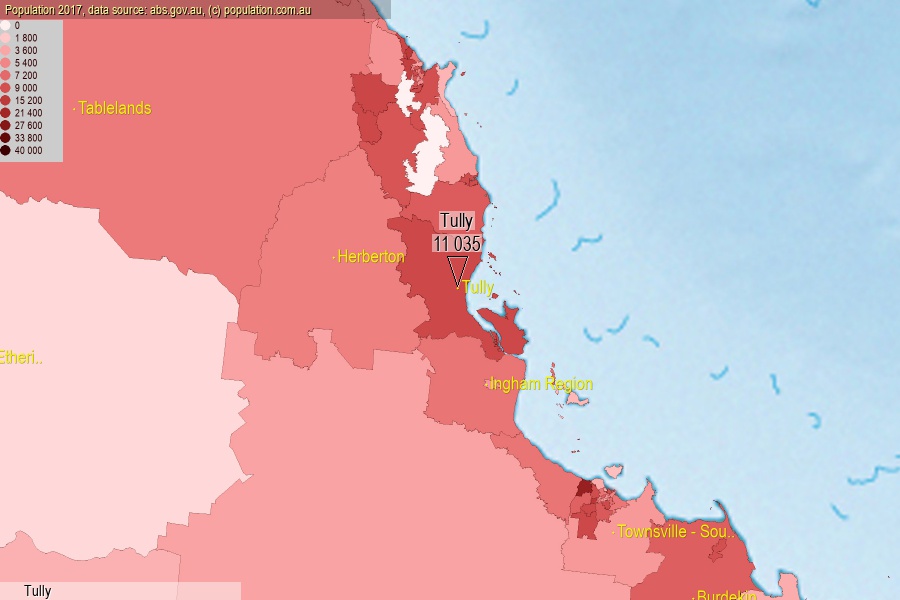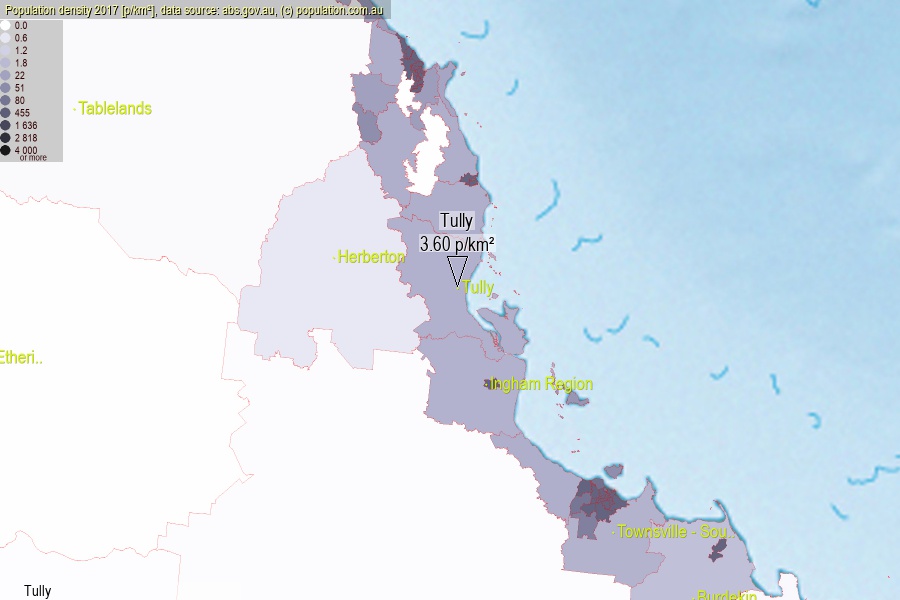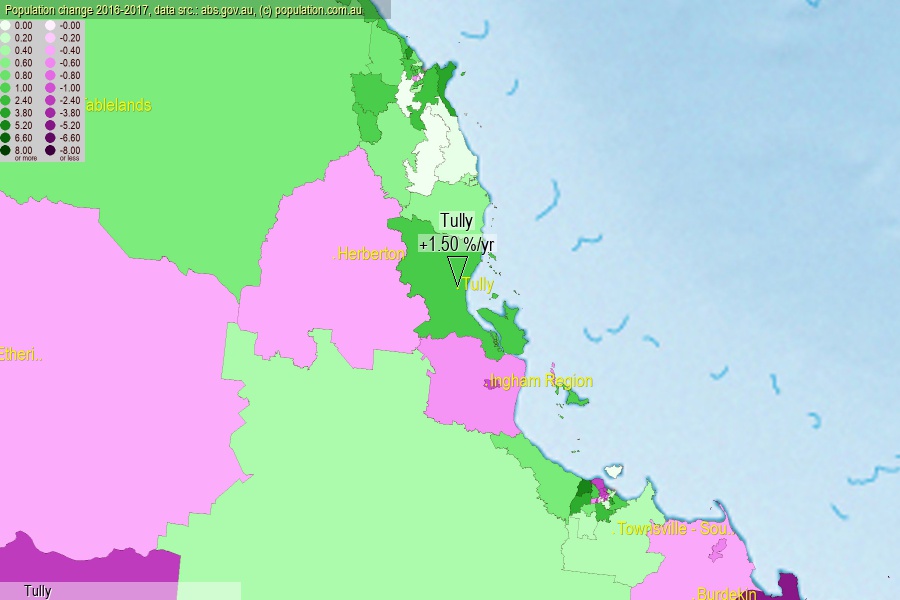 population.com.au
population.com.auLast official estimated population of Tully (as Statistical Area Level 2) was 11 035 people (on 2017-06-30)[2]. This was 0.04% of total Australian population and 0.221% of QLD population. Area of Tully is 3 065.10 km², in this year population density was 3.60 p/km² . If population growth rate would be same as in period 2016-2017 (+1.5%/yr), Tully population in 2025 would be 12 430. [0]



Click to enlarge. Tully is located in the center of the images.
Population [people], population density [p./km²] and population change [%/year] [2]
View borders » (new window) [4]
[1991-1992] +2.09 %/Yr.
[1992-1993] +3.21 %/Yr.
[1993-1994] +2.89 %/Yr.
[1994-1995] +0.82 %/Yr.
[1995-1996] +2.63 %/Yr.
[1996-1997] +3.58 %/Yr.
[1997-1998] +2.29 %/Yr.
[1998-1999] +2.00 %/Yr.
[1999-2000] +4.36 %/Yr.
[2000-2001] +1.97 %/Yr.
[2001-2002] -0.51 %/Yr.
[2002-2003] -0.44 %/Yr.
[2003-2004] -0.93 %/Yr.
[2004-2005] -1.47 %/Yr.
[2005-2006] -2.08 %/Yr.
[2006-2007] +0.49 %/Yr.
[2007-2008] +0.72 %/Yr.
[2008-2009] +0.59 %/Yr.
[2009-2010] +0.07 %/Yr.
[2010-2011] -1.03 %/Yr.
[2011-2012] +0.08 %/Yr.
[2012-2013] +0.45 %/Yr.
[2013-2014] +0.62 %/Yr.
[2014-2015] +0.21 %/Yr.
[2015-2016] +1.33 %/Yr.
[2016-2017] +1.50 %/Yr.
[0] Calculated with linear interpolation from officially estimated population
[1] Read more about SA2 and Australian Statistical Geography Standard (ASGS) on abs.gov.au
[2] Population data from Australian Bureau of Statistics (Population and density: 2017; change: 2016-2017)
[3] Digital Boundaries: Australian Statistical Geography Standard (ASGS) 2016.
[4] Border coordinates are simplifyed using Ramer-Douglas-Peucker algorithm.